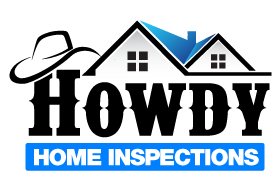Howdy folks!
It’s been almost two months since my last blog post. Sorry about that! Things have been busy, busy, busy to say the least. I want to get back to writing some good articles for my site. I couple of posts ago, I wrote about Radon and why it’s important to test for it. Today, I want to write about Lead Based Paint.
If you’ve ever bought a house that was built prior to 1978 then you should have signed a Lead Based Paint Addendum with your Offer to Purchase Contract. This addendum explains the dangers of Lead Based Paint and gives buyers the right to test for it during their due diligence period. Most people waive their right to conduct testing, but is that the best choice? What if you have young children in your house?
In 1991 the Secretary of HUD said that lead poisoning was the #1 environmental threat to children’s health in the United States. WHAT? The #1 threat? Does this mean that it’s more dangerous than second hand smoke and Radon? WOW! And to think most people don’t even think of this danger when they’re buying a home.
Lead based paint is one of the more significant ways children can get lead poisoning. Ingesting or breathing dust with lead based paint can negatively affect the nervous system of children and can lead to mental and physical delays, reduced attention span, behavioral issues and learning disorders.
Lead is like radon in the sense that you can’t see it, smell it or taste it. It used to be used when making pottery, water pipes, paint and even gasoline. Because of this it can be inside your home in the paint, around your home in the soil and in your water supply because water pipes used to be made with lead.
About 75% of all homes built before 1978 contain lead based paint. In 1978 the US Consumer Product Safety Commission finally banned the use of lead in the manufacturing of paint. Lead based paint is most dangerous when it begins chipping and flaking off the house. Since it needs to be ingested to be harmful, paint that has been properly managed poses little risk. However, since lead does not break down naturally, it remains a hazard until it is removed.
The Center for Disease Control sets the threshold for safe blood-lead levels at 10 Micrograms per deciliter. They estimate that over 300,000 children in the US have blood-lead levels above this threshold.
As a Charlotte home inspector and part-time hippie, I’m always worried about exposing my family to unnecessary risks. For me Lead Based Paint is one of those risks. I’ve lived in plenty of 1950 era houses that I’m sure had lead based paint. I just always took extra precautions to manage that risk. I never would allow paint on our houses to get to the point where it was about to chip or flake.
At any rate, lead based paint is just something to keep on your radar when buying a home… Especially if you have children. I know since we had our son, both my wife and I are a lot more cautious about our surroundings than we were when it was just the two of us.
Be Happy and Be Kind!
T.J. Thorne


